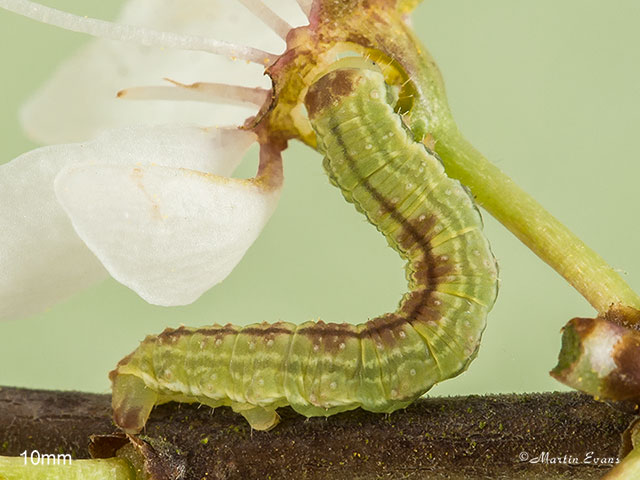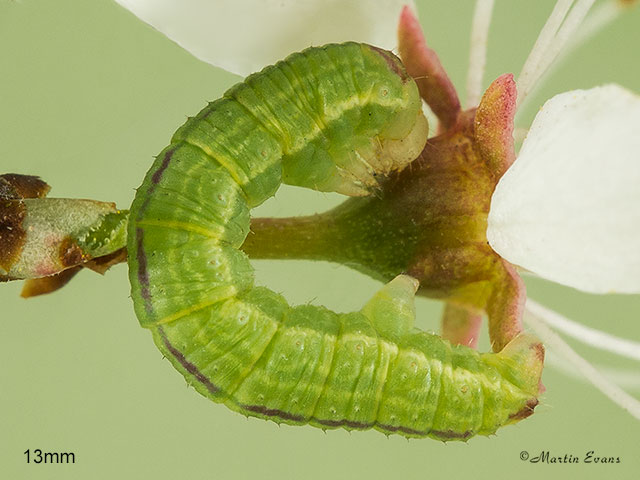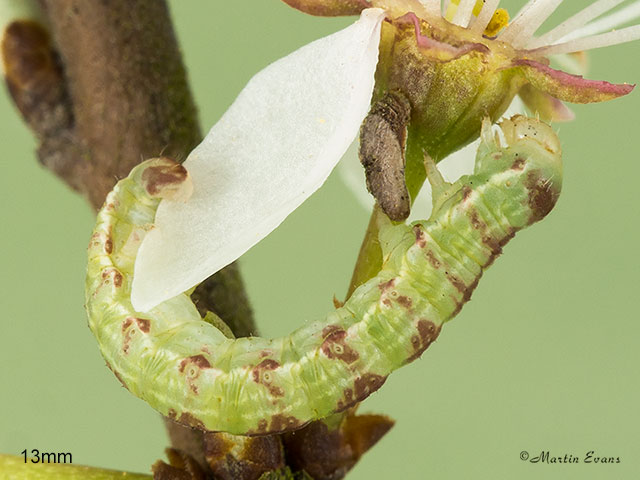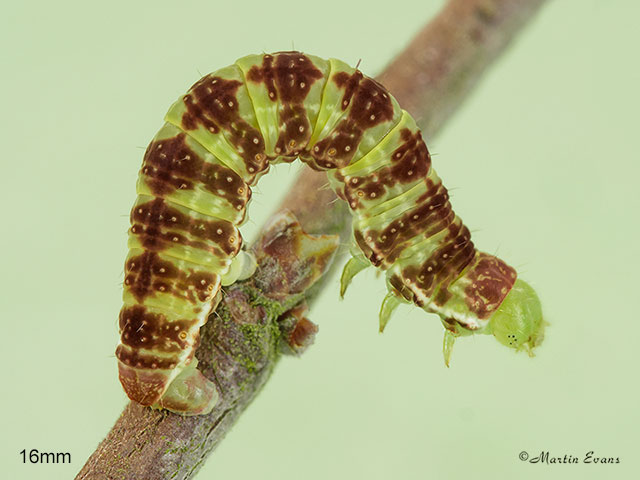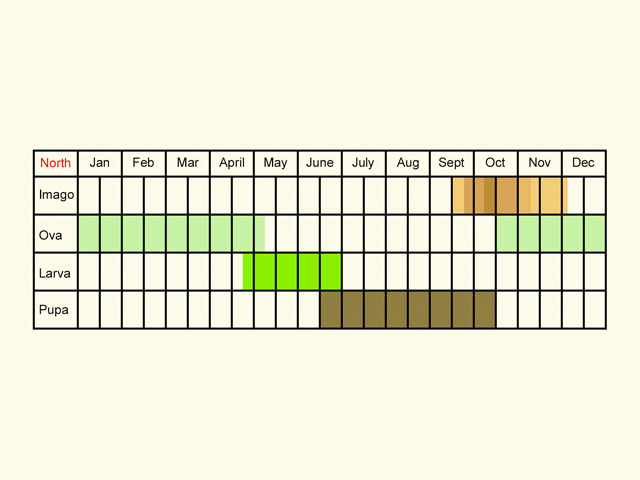Geometridae
70.107 November Moth Epirrita dilutata ([Denis & Schiffermüller], 1775)
Common
Similar species: (These ID features are only useful for well marked specimens). November Moth Epirrita dilutata has the spot in the paler cross-band either linked to the outer edge of the band or integrated with it. Pale November Moth Epirrita christyi has the outer edge of the paler cross-band curving around the dark spot, but is almost in line with the edge of the band on each side. Autumnal Moth Epirrita autumnata has the outer edge of the paler cross-band forming a fairly deep indentation away from the dark spot which is distanced away from the edge of the band on each side. Small Autumnal Moth Epirrita filigrammaria is on average smaller (14 to 18mm) than the other three species and usually has a paler thorax. The outer edge of the paler cross-band is deeply indented away from the dark spot, but is almost in line with the edge of the band on each side. If not totally sure, check the genitalia.
Forewing: 15 to 20mm
Habitats: Deciduous woodland, scrub, hedgerows and gardens.
Habits: The moth comes to light.
Foodplant: The larva feeds on Blackthorn, Hawthorn, Apple, oaks, elms, birches and other deciduous trees. It pupates in the soil.





